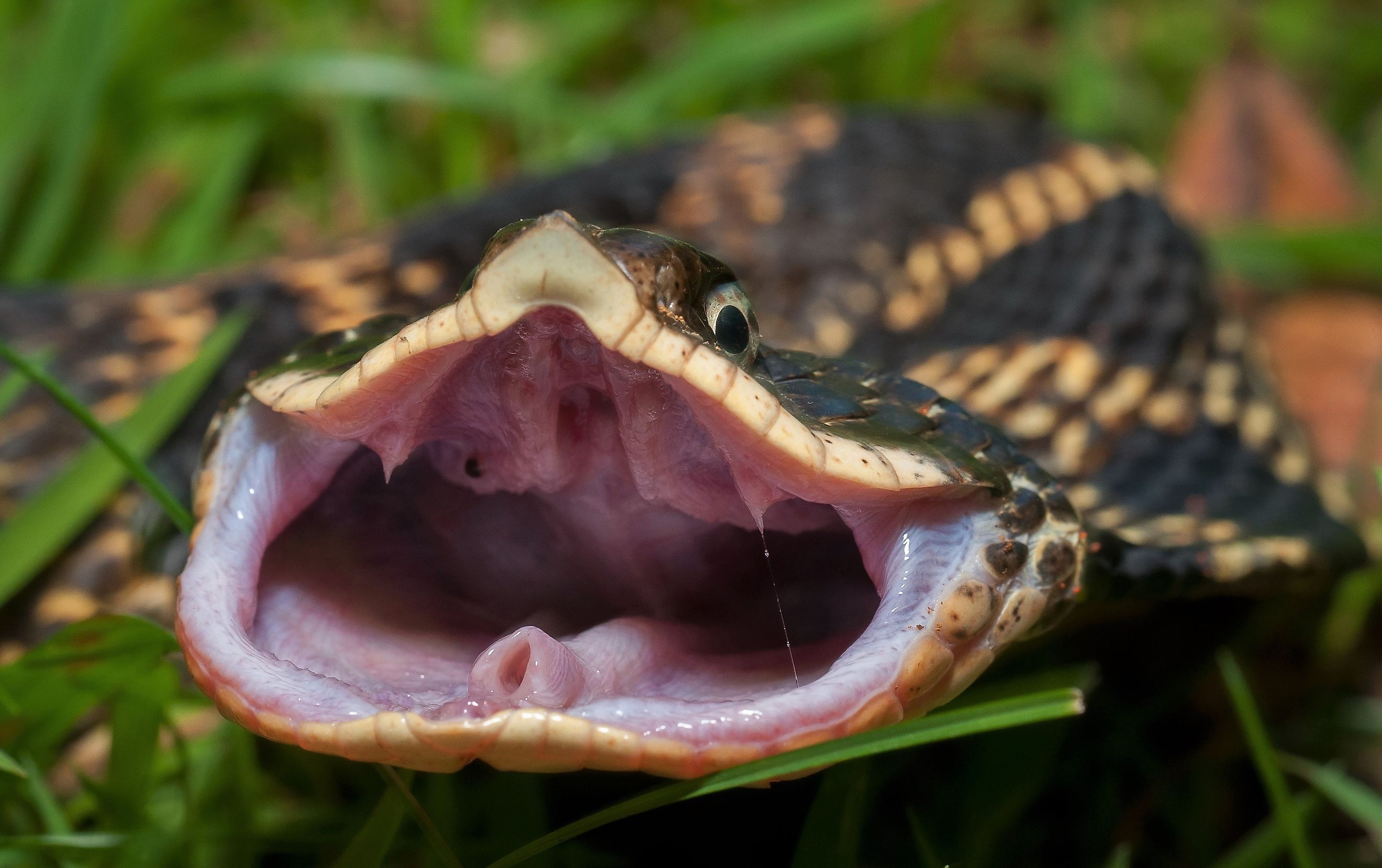
The Most Snake Infested Lakes in Illinois
Illinois is home to various lakes and water bodies that provide a habitat for different snake species. Specifically, you will find that forty species of snakes can be found here, and many of them will be found in some of the most beautiful lakes in the state. While most snakes are harmless and play a crucial role in the ecosystem, it's interesting to know which lakes are known for having a higher presence of these reptiles.
Lake Shelbyville
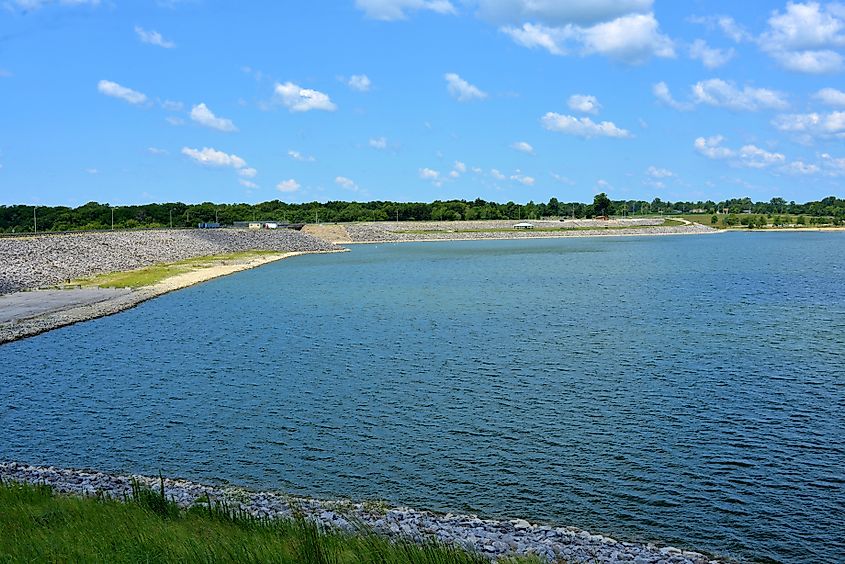
Covering 11,000 acres, Lake Shelbyville is home to raccoons, white-tailed deer, and beavers. It is considered a prime location for bird watchers as a wide variety of unique bird species, such as herons, waterfowl, and bald eagles, can be seen in their natural state here. This lake attracts many fishermen since it has some sizable largemouth bass, catfish, and crappie.
Usually spotted near the water's edge, the eastern garter snake is a common resident of Lake Shelbyville. This species, when threatened, will release a smelly odor to deter threats. It is known to be mildly venomous, but its venom is harmless to humans.
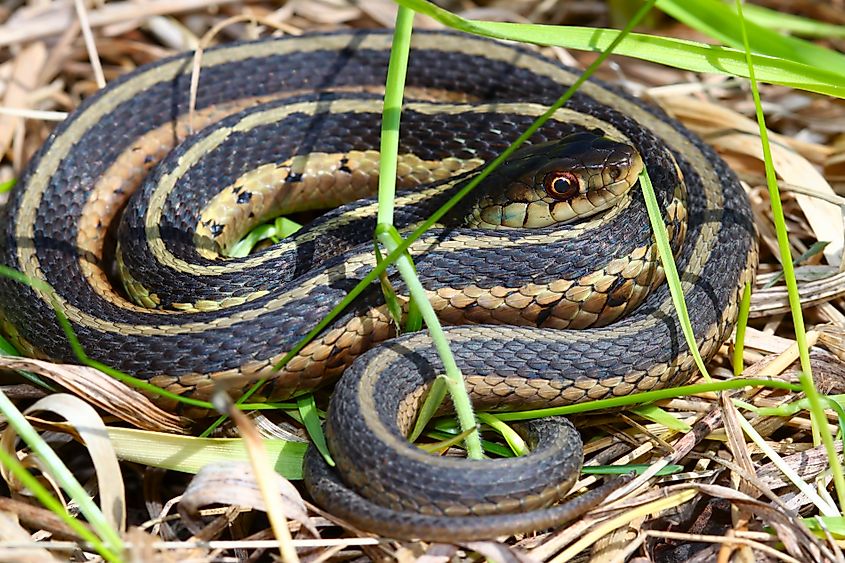
The northern water snake - may also be spotted swimming to hunt for fish and amphibians. Because of their similar appearance, people often confuse northern water snakes with cottonmouth snakes, but they don’t possess venom.
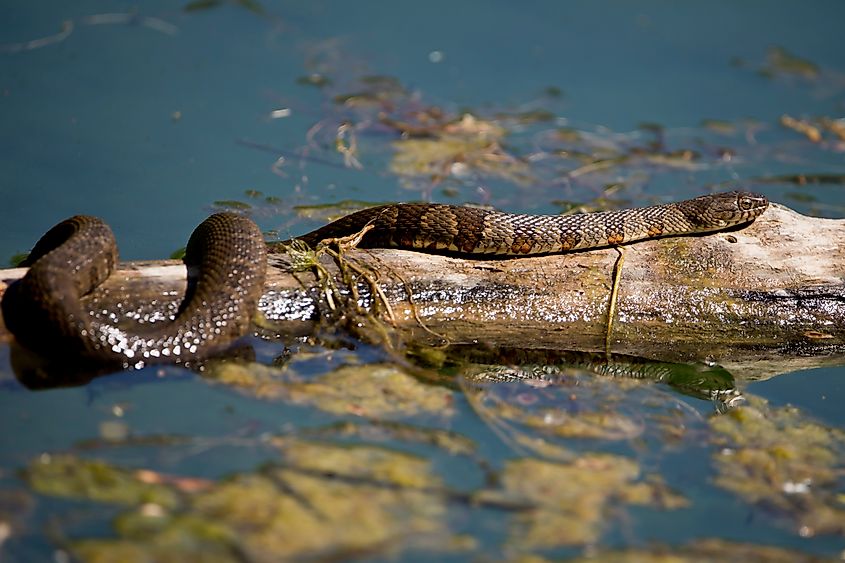
At a lake, vibrant green is a little hard to miss, so you will be able to see the smooth green snake if, of course, it finds itself anywhere else other than between leaves or tall grass. These little snakes are usually very docile and prefer to hide. Their role is essential in controlling the insect population, as their diet is predominantly centered around insects and spiders.
Rend Lake
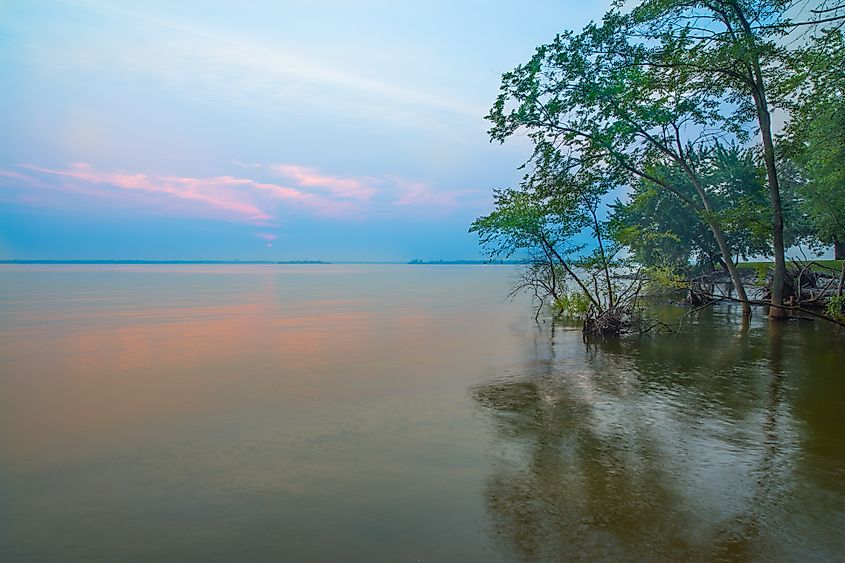
Containing 18,900 acres of water, Rend Lake supplies the nearby community and is also a water source for the wildlife that can be found around it. The lake attracts locals and travelers because it is a prime location for hiking, animal watching, and boating. Here, you will find no shortage of great blue herons, bobcats, and even allusive coyotes.
A typical snake species around these parts is the eastern ribbon snake. Easily identifiable by its stripes. Wetlands are their preferred hunting grounds, and they are highly skilled swimmers since their prey is primarily frogs, toads, smaller fish, and occasionally insects.
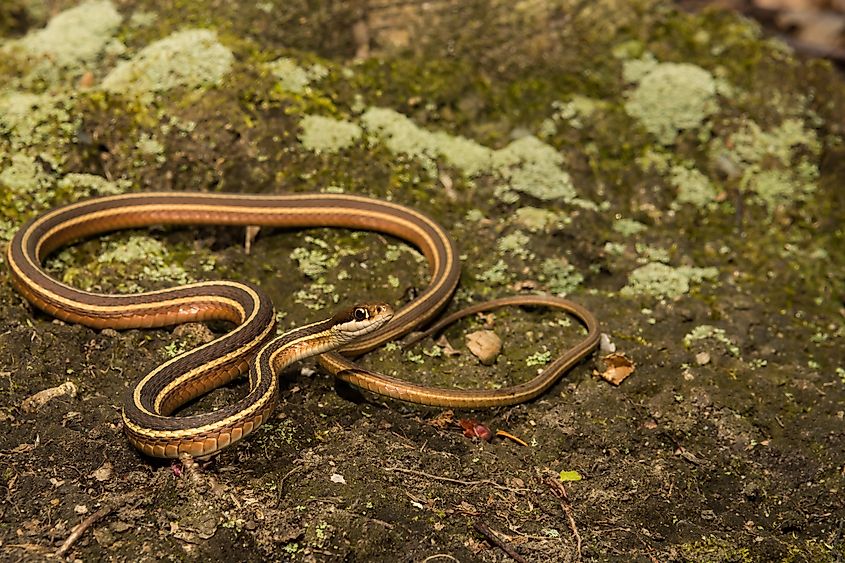
A subspecies of the northern water snake, fully adapted to aquatic environments, can also be found gliding through these waters. These opportunistic feeders, which are non-venomous, will eat whatever Rend Lake’s waters have to offer.
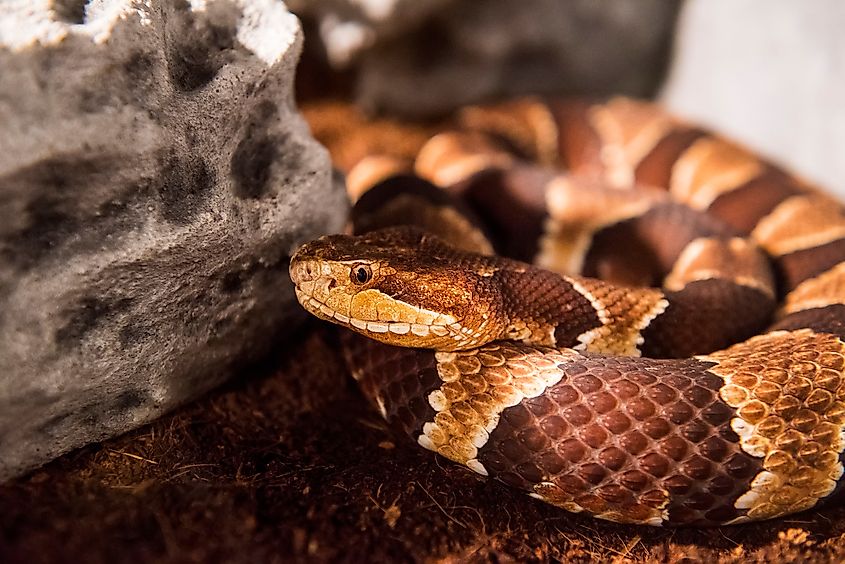
You should take caution around the Rend Lake water's edge and wooded areas as the venomous copperhead uses these areas to hunt for small mammals, birds, and large amphibians. Their bodies, hourglass-shaped bands, and coloring offer the ideal camouflage in leaf litter. Interestingly, their young have yellow-tipped tails designed to lure prey in.
Carlyle Lake
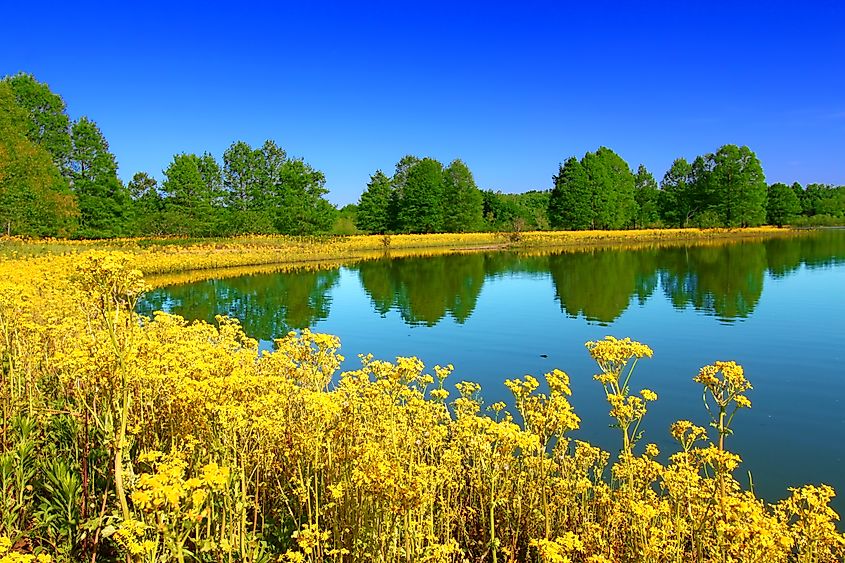
Home to cute muskrats, foxes, American white pelicans, and other shorebirds, the Carlyle Lake is one of the latest man-made lakes in Illinois. This 25,000-acre reservoir has many visitors participating in fishing, boating excursions, hiking, and bird watching.
While visiting this lake, you may encounter a species of snake best known for its unmarked belly. The plain-bellied water snake is a semi-aquatic, non-venomous species that, if threatened, will flatten its body and release a foul smell to deter threats. While its belly is always left plain, this species comes in various colors on the rest of its body. These colors range from gray to olive to a deep reddish-brown.
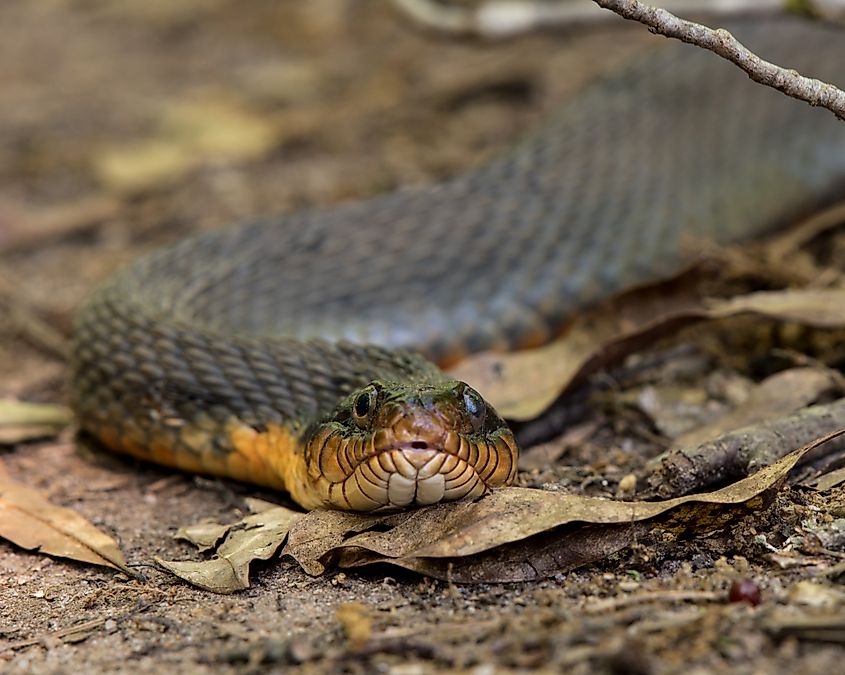
Another resident snake you may see is the rat snake. The rat snake is known for its expert climbing skills, and as the name implies, it prefers rodents. However, it will set its sights on bird eggs and birds if needed. They are usually docile and hesitant to bite and can live up to 20 years!
The western fox snake is another species that calls this lake home. It is often mistaken for a copperhead and is listed as a non-venomous species. People often mistake the western fox snake for a copperhead due to their similar pattern. They also frequently confuse it with a rattlesnake because when threatened, this snake vibrates its tail to mimic the familiar rattle of a rattlesnake.
Clinton Lake
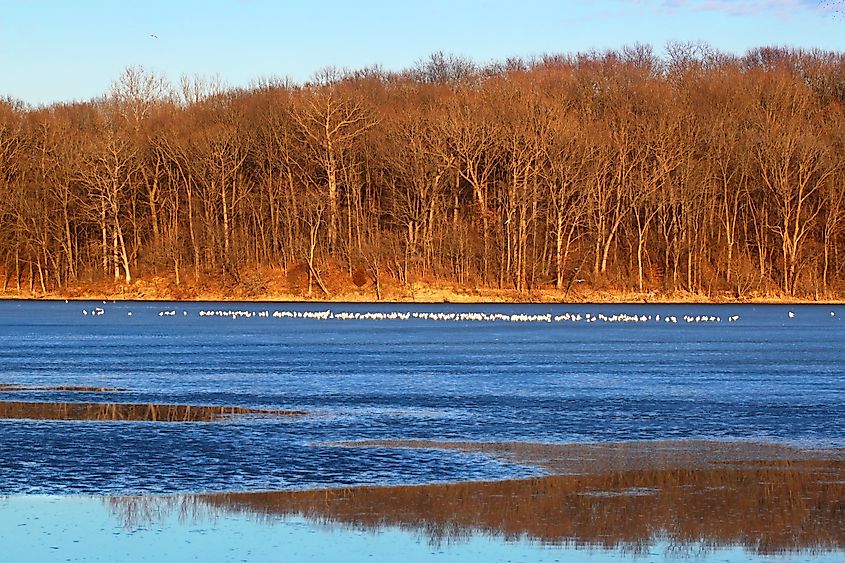
Clinton Lake has 4,900 acres of clear water filled with fish and eastern newts and is surrounded by populations of deer, rabbits, and red foxes. Due to the unique and diverse wildlife, many visitors enjoy hiking and fishing activities around Clinton Lake.
However, those planning a visit should note that a few snakes make this lake their home. For example, the eastern milk snake, often found around more rocky water areas, is commonly spotted at this lake. It has red, white, and black-colored bands around its body. This non-venomous constrictor species suffocates its prey.
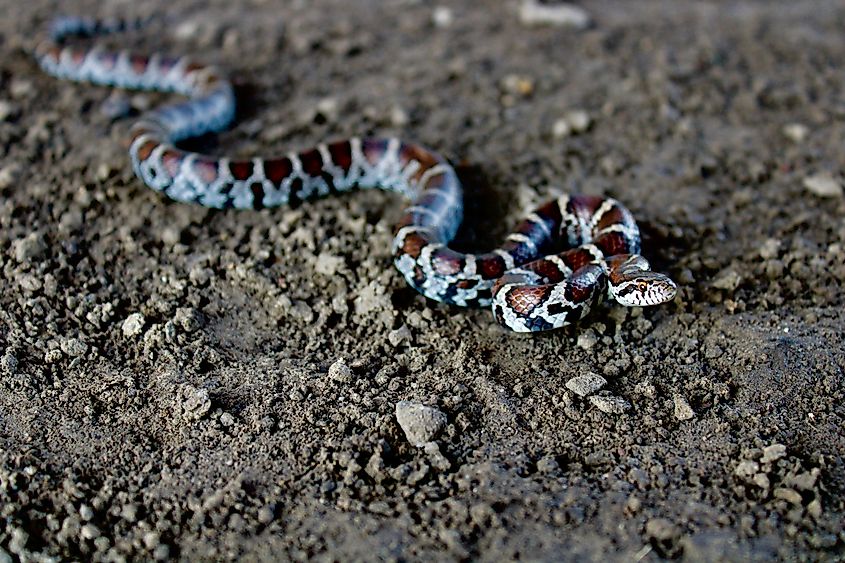
The common garter snake can also be found in the long grass sections of the lake. It is known for its three horizontal lines running down its body. This species eats predominantly frogs and smaller fish, making the lake a common place to find it slithering around.
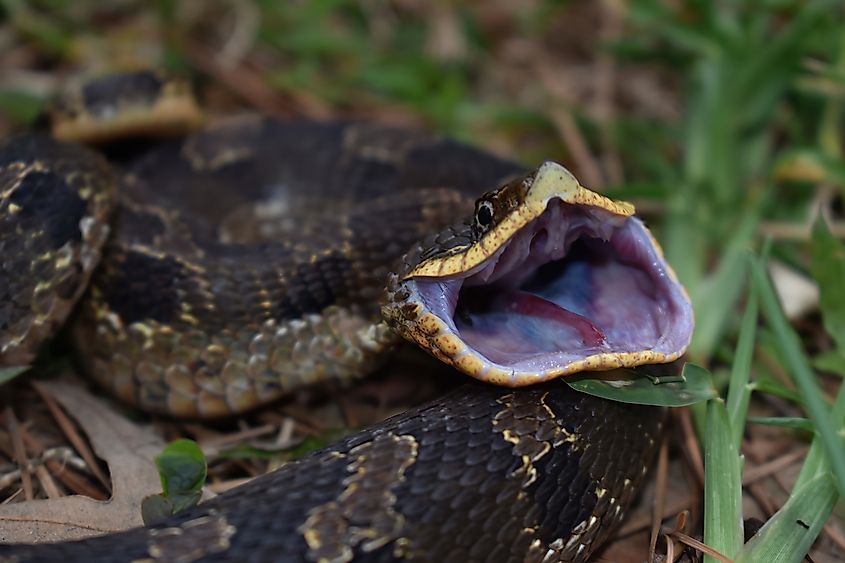
Then there is the hognose snake, easily identified by its uniquely shaped snout. This non-venomous species can be found along the rocky parts of the lake and feeds on lizards, amphibians, and birds.
Lake Decatur
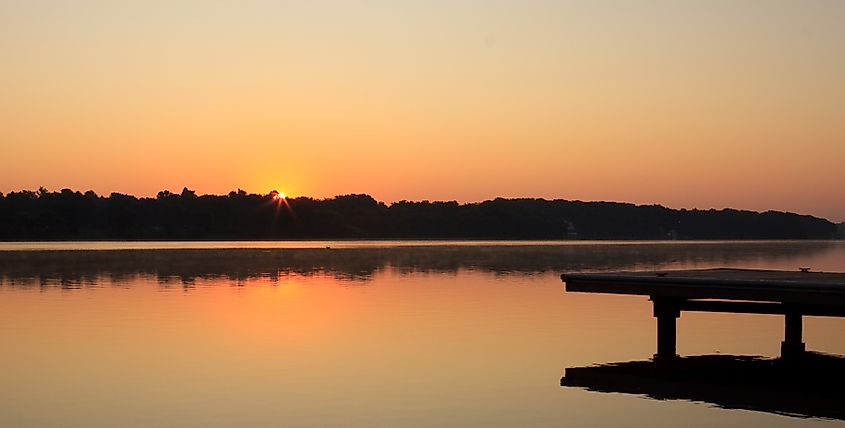
Lake Decatur offers 2,800 acres of water with 30 miles of shoreline and is open to the public for boating, wildlife watching, and hiking excursions. Visitors can expect to see muskrats, pelicans, herons, raccoons, squirrels, and even deer when out on the lake or hiking.
Several snakes are visible in the area. The prairie kingsnake inhabits the region around the lake, where it hunts by ambushing rodents, other snake species, and lizards. Although it looks similar, it is not a subspecies of the copperhead but a distinct non-venomous snake.
One notable species at Lake Decatur is the midland brown snake. Typically measuring 9 to 15 inches, it feeds on earthworms, slugs, and various invertebrates found in the wet mud beside the lake. It poses little threat to humans, and some people even keep it as a pet.

Finally, an experienced swimmer navigating these waters often hunts nearly everything—except humans—in and around the lake. The diamond-backed water snake preys on fish, tadpoles, and other small creatures. It is regarded as non-venomous and only displays aggression when trapped. Typically, it is quite gentle, so as long as you avoid touching it when you see it, it is unlikely to bite.
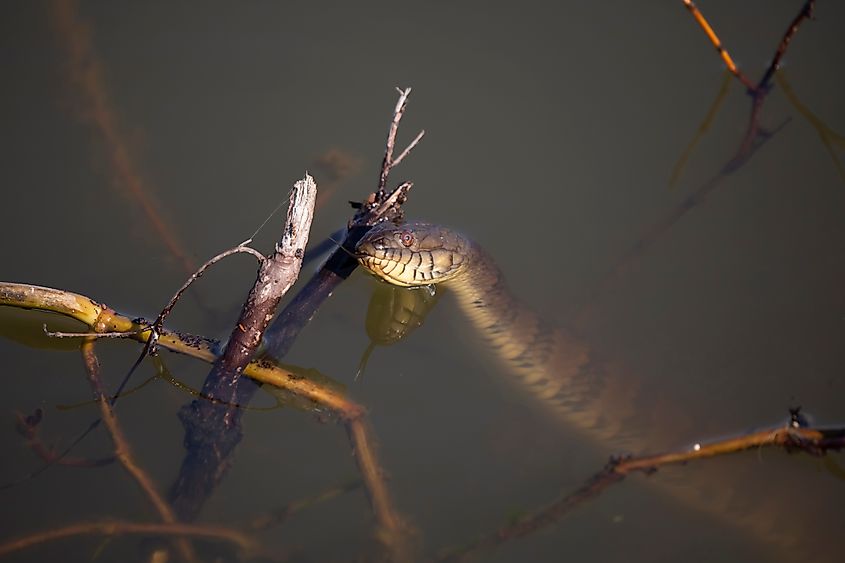
When visiting lakes in Illinois, you're likely to come across at least one type of snake. Whether you're a snake enthusiast or just want to be cautious, it's essential to stay alert and know which animals you might encounter in nature. Hopefully, this snake guide will help you identify which snakes are safe to observe and which ones you should avoid during your trip to any of the lakes mentioned.











